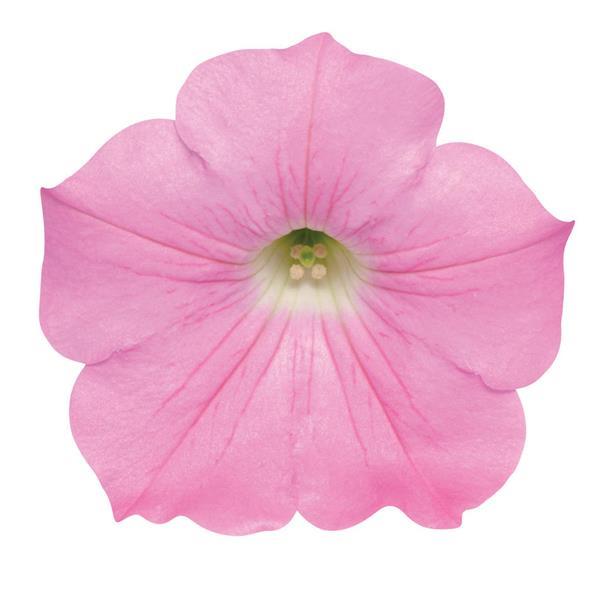Petunia, Easy Wave Pink
Price range: $2.49 through $7.99
Discount per quantity
| Quantity | 3 - 8 | 9 - 14 | 15+ |
|---|---|---|---|
| Price | Price range: $2.42 through $7.75 | Price range: $2.34 through $7.51 | Price range: $2.24 through $7.19 |
| % Discount | 3% | 6% | 10% |
Description
Easy Wave Pink Petunia: Your Effortless Blanket of Blush
Welcome to the World of Easy Wave
Picture this: You step outside on a mild spring morning. Instead of a bare patch of soil, you see a wide, rosy sea of blooms that tumble softly over the edge of your planters, spill across sunny beds, and greet every passerby with a cheery wave. That is the magic of Easy Wave Pink petunia. In other words, it is a living quilt of color that asks for very little but gives you months of joy.
Together, we will explore why this petunia is different, how it fits into your garden dreams, and the simple steps that lead to nonstop flowers. Let’s dive in and grow something beautiful—side by side.
Meet Easy Wave Pink
Easy Wave Pink belongs to the famous Wave® family of spreading petunias. Unlike older types that grew tall and needed lots of deadheading, Wave varieties form low, wide cushions. Easy Wave is the next leap forward. It stays a bit tidier, yet still covers ground fast. Plants reach only 6 to 12 inches high, but they stretch 30 to 36 inches across. That means one or two plants can fill a large basket or act as living mulch between shrubs.
The flowers are classic petunia trumpets—soft pink petals that glow like cotton candy at sunset. Each bloom measures about three inches across, and the color holds even through hot afternoons or cool, breezy evenings. Best of all, fresh flowers keep replacing the old, so you rarely need to pinch spent blooms.
Why We Adore It
- Unbeatable Spread. A single plant fans out in every direction, weaving a dense mat that crowds out weeds.
- No Fuss, No Muss. These petunias keep blooming without constant deadheading. In other words, they clean themselves.
- Heat and Cool Tough. Easy Wave laughs at early-season chills and midsummer heat waves alike, so you plant it once and watch it flourish.
- Color from Spring to Frost. With sun, water, and a little food, the show starts early and stays strong until the first hard freeze.
- Pollinator-Friendly. Bees, butterflies, and hummingbirds visit the pink trumpets for quick sips of nectar. You help wildlife while they help your flowers.
Plant Portrait
| Trait | Details |
|---|---|
| Height | 6 – 12 inches |
| Spread | 30 – 36 inches |
| Habit | Mounded, spreading |
| Flower Size | 2.5 – 3 inches |
| Color | Clear, medium pink |
| Sun Needs | Full sun (6+ hours) |
| Life Cycle | Warm-season annual |
Each stem carries a stream of blooms on fresh green leaves. The plants branch freely from the base, so they fill spaces evenly and avoid bare centers.
How to Grow Easy Wave Pink
The Right Spot
Pick a place where the sun shines bright for most of the day. Full sun brings the most flowers. Light shade in the late afternoon is fine, but deep shade leads to floppy stems and fewer blooms.
The soil should drain well. If water puddles, mix in aged compost, pine fines, or coarse sand to loosen the ground. Slightly acidic to neutral soil (pH 6.0 – 7.0) works best.
Planting Steps
- Time it Right. Wait until the danger of frost has passed. Soil should feel warm.
- Space Generously. Place baby plants 12–15 inches apart in beds. In baskets, plant three starts around the rim of a 12-inch pot.
- Loosen Roots. Gently tease roots to spur outward growth instead of circling the plug.
- Set and Firm. Plant so the crown sits even with the soil line. Press lightly to remove air pockets.
- Water In. Give a long, gentle drink to settle the soil around each root ball.
Water Wisdom
Wave petunias enjoy steady moisture, but they hate soggy feet. A simple rule helps: keep the top inch of soil slightly damp. In raised beds during hot weeks, you may water every day. In cool weather, check every other day. Container plants dry out faster; feel the mix and water when it turns light brown.
Feeding Made Simple
Rich flowering asks for steady fuel. Feed with a balanced, water-soluble fertilizer (for example 15-15-15) every seven to ten days. Slow-release pellets at planting time are helpful, yet liquid meals boost blooms when growth surges. If leaf color fades, add a dose of liquid iron for quick green-up.
Pinch, Prune, and Play
Early in the season, pinch the tips once. This single pinch encourages branching. After more than a month of full display, long stems may trail beyond their space. Feel free to trim a third off the ends. New shoots will appear fast, carrying a fresh wave of flowers. Instead of winter dormancy, Easy Wave races to bloom again.
Pests and Problems
- Aphids. Spray stems with a sharp burst of water or insecticidal soap.
- Caterpillars. Hand-pick or apply Bacillus thuringiensis.
- Botrytis (Gray Mold). Improve air flow and avoid overhead water in cool, wet spells.
Fortunately, Easy Wave resists many issues that plague older petunias because the foliage is thicker and dries quickly after rain.
Overwintering and Seasonal Care
In zones with mild winters (USDA 9–11), plants may survive outdoors, yet bloom quality drops. Most gardeners treat Easy Wave as an annual. If you wish to carry favorite colors forward, take tip cuttings in late summer, root them indoors, and keep pots under bright lights. Come spring, you will have free starts ready to burst into outdoor beds.
Design Ideas and Companions
- Ground Cover Glory. Let Easy Wave carpet the front of sunny borders. It softens the edge like rosy foam.
- Color Echoes. Pair with purple fountain grass. The grass plumes dance above the pink sea, adding height and texture.
- Bee Buffet. Mix with yellow lantana and blue salvia. Together, they feed a full roster of pollinators.
- Edible Blend. Plant near tomatoes. The flowers draw helpful insects, and the trailing stems hide bare soil, keeping roots cool.
Container Magic
Easy Wave Pink shines in pots, tubs, window boxes, and hanging baskets. Use a light, peat-based mix. Add slow-release fertilizer pellets and water-holding crystals if you garden in a blistering climate. Three young plants can overflow a 14-inch basket in four weeks. Rotate baskets every few days so each side basks in the sun. That way blooms stay even.
Propagation in a Snap
Although Easy Wave seeds are available, the hybrid may not come true from collected seed. Instead, use stem cuttings:
- Snip a healthy, non-flowering tip about four inches long.
- Remove lower leaves and dip the cut end in rooting powder.
- Stick the cutting in moist seed-starting mix. Cover with a plastic dome to hold humidity.
- Set under bright light but no direct sun. Roots appear in 10 to 14 days.
- Transplant to a small pot and pinch the tip to foster branching.
Eco-Friendly Wins
You, me, and our gardens share space with many small creatures. Easy Wave Pink offers nectar that bees love, colors that butterflies see well, and a landing pad for tiny hummingbirds. Because the plant grows dense, it also shades soil, conserving moisture and reducing weed pressure. In other words, you plant beauty and get sustainability as a bonus.
Quick-Fire Q & A
Q: Does Easy Wave Pink need deadheading?
A: Not usually. Old blooms drop on their own. If a few linger, a gentle brush removes them.
Q: Can I grow it from seed?
A: Yes, but seeds need light to germinate and steady warmth. Most gardeners start with young plants for speed.
Q: How much fertilizer is “steady”?
A: Feed with liquid food every 7–10 days or follow label directions on a slow-release product used at planting.
Q: Will it survive frost?
A: A light frost may nip flowers, yet the plant can bounce back. A hard freeze ends the show. Cover plants if frost threatens in fall and you crave a bit more color.
Q: Why are my leaves turning yellow?
A: Check three things: overly wet roots, lack of iron, or low nitrogen. Adjust water first, then add a balanced feed with micronutrients.
Q: What if stems get too long?
A: Give them a soft haircut, trimming back by one-third. Buds along the stems wake up fast, and in two weeks you have fuller growth.
Step into a Blush-Hued Tomorrow
We have walked through every corner of Easy Wave Pink’s world—from the first pinch of soil to the thrill of a porch spilling over with pink petals. This plant proves that gardening success need not be hard. Instead of worry, you get wonder. Instead of gaps, you get a living blanket of bloom. So grab your trowel, find a sunny spot, and invite Easy Wave Pink into your life. Together, we will color the season, one cheerful wave at a time.
Additional information
| Weight | N/A |
|---|---|
| Options | Seed 10 count, Starter Plug – 3 count, 4 in. (16.9 fl. oz.) Pot |





